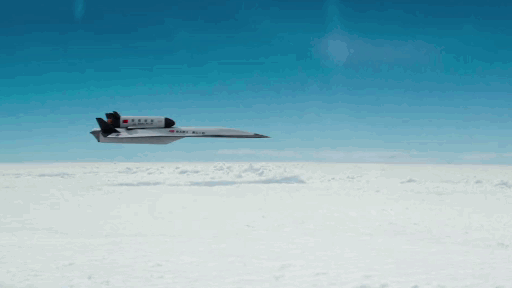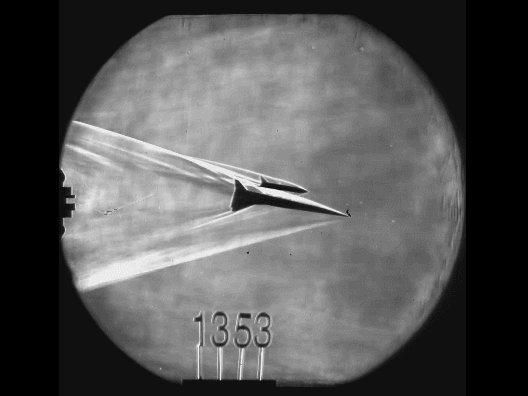- Joined
- Aug 8, 2008
- Messages
- 6,070
- Points
- 83
【中国空天飞机传重大喜讯,组合发动机成功首飞,往返太空指日可待】https://mr.baidu.com/r/buAXVdOWGc?f=cp&u=58a264b77ea6b580
中国空天飞机传重大喜讯,组合发动机成功首飞,往返太空指日可待

百战刀防务观察
10-20 11:41优质创作者
关注
近日央视报道了在湖北武汉举行的中国国际商业航天高峰论坛,披露了我国正在打造的天地往返运输系统“腾云工程”空天飞机的最新进展,该项目已完成我国首次组合动力模态转换飞行试验,实现了空天飞行动力技术重大突破。

“腾云工程”是我国研制的下一代可重复使用的两级入轨空天飞行器,由可在大气层内高超音速飞行的载机和航天器组成,可将2吨载荷发射入近地轨道。空天飞机发射时载机驮着航天器从地面机场滑跑起飞,在高空加速到5马赫以上在高空分离,航天器在自身火箭发动机的推进下进入太空,载机则自行返回降落,航天器完成任务后也能再入大气层滑翔降落。与现有运载火箭相比,这种可完全重复使用的空天飞行器将极大降低发射成本低并提高发射灵活性。

但两级入轨空天飞行器的研发难度极高,要想实现“腾云工程”,我国航天科研人员要攻克载机组合动力系统、两级飞行器高超音速分离、空天飞机再入时的热防护等技术难关,其中组合动力系统的研发难度无疑最大。

在“腾云工程”的两级结构中,高超音速载机的研制难度比可重复使用航天器更加困难,其使用的组合发动机对于我国航空航天业界来说都是全新研发课题。中国航天科工曾在2018年接受媒体采访时表示,载机驮着航天器依靠航空涡轮发动机起飞,达到一定速度后改用冲压发动机进入超高音速飞行,因此这种组合发动机应该是涡轮基组合循环发动机(TBCC)。

在这种组合发动机中,涡喷发动机与亚燃/超燃烧冲压发动机共用同一进气道和尾喷管,在3马赫以下的起降和超音速巡航飞行中,冲压发动机被屏蔽,飞行器依靠涡喷发动机提供动力。速度超过3马赫时,冲压发动机接力开启,涡喷完成任务后被屏蔽。随后飞行器在冲压发动机的推进下一路爬升到30至40公里的临近空间并加速到5马赫以上,与航天器在这种高超音速环境下分离,后者开启火箭发动机自行入轨。


涡轮基组合循环发动机将成为整个空天飞机系统能否实现水平起降和完全重复使用的关键。自“腾云工程”造2017年被首次宣布以来,该项目已经取得诸多关键性突破,例如2018年9月实现组合发动机模态转换首次飞行验证,2019年11月完成两级入轨空天飞行器的风洞自由分离试验,2020年9月可重复使用试验航天器辐射入轨后成功降落,同期某组合动力发动机首飞成功。从中可以看出整个项目进展非常顺利,完全有望实现2030年进行技术验证试飞的目标。
China Aerospace Aircraft delivers great news, the combined engine successfully makes its first flight, and the space shuttle is just around the corner

Defense Observation
10-20 11:41 quality creators
attention
Recently, CCTV reported on the China International Commercial Space Summit Forum held in Wuhan, Hubei, and disclosed the latest developments of the "Tengyun Project" aerospace aircraft that my country is building for the space-to-earth transportation system. The test achieved a major breakthrough in aerospace flight power technology.

The "Tengyun Project" is a next-generation reusable two-stage orbiting aerospace vehicle developed by my country. It consists of a carrier and spacecraft that can fly in the atmosphere at hypersonic speeds and can launch 2 tons of payload into low-Earth orbit. During the launch of the spacecraft, the carrier carried the spacecraft and taxied and took off from the ground airport, accelerated at a high altitude to above Mach 5, and separated at high altitude. After completing the mission, it can also glide and land again in the atmosphere. Compared with existing launch vehicles, this fully reusable aerospace vehicle will greatly reduce launch costs and increase launch flexibility.

However, the development of two-stage aerospace vehicles into orbit is extremely difficult. To realize the "Tengyun Project", Chinese aerospace researchers must overcome the combined power system of the carrier aircraft, the hypersonic separation of the two-stage aircraft, and the heat of the aerospace aircraft reentry. Among the technical difficulties such as protection, the research and development of the combined power system is undoubtedly the most difficult.

In the two-stage structure of the "Tengyun Project", the development of a hypersonic carrier aircraft is more difficult than a reusable spacecraft. The combined engine used in it is a new research and development topic for my country's aerospace industry. China Aerospace Science and Industry said in an interview with the media in 2018 that the carrier took the spacecraft to take off with aero turbine engines, and after reaching a certain speed, it switched to a ramjet for supersonic flight. Therefore, this combined engine should be a turbine-based combination. Cycle engine (TBCC).

In this combined engine, the turbojet engine and the sub-combustion/super-combustion ramjet engine share the same intake port and tail nozzle. In the take-off and landing and supersonic cruise flight below Mach 3, the ramjet is shielded and the aircraft relies on the turbo Jet engine provides power. When the speed exceeds Mach 3, the ramjet relay is turned on, and the turbojet is shielded after completing the task. Subsequently, the aircraft climbed all the way to a nearby space of 30-40 kilometers under the propulsion of the ramjet engine and accelerated above Mach 5, separated from the spacecraft in this hypersonic environment, and the latter turned on the rocket engine into orbit on its own.


Turbine-based combined cycle engines will become the key to whether the entire aerospace aircraft system can achieve horizontal take-off and landing and complete reuse. Since the "Tengyun Project" was first announced in 2017, the project has achieved many key breakthroughs, such as the first flight verification of the combined engine modal conversion in September 2018, and the completion of a two-stage orbital aerospace vehicle in November 2019 The wind tunnel free separation test, the reusable test spacecraft successfully landed after being radiated into orbit in September 2020, and a combined power engine made its first flight during the same period. It can be seen that the entire project is progressing very smoothly, and it is fully expected to achieve the goal of technical verification flight test in 2030.
中国空天飞机传重大喜讯,组合发动机成功首飞,往返太空指日可待

百战刀防务观察
10-20 11:41优质创作者
关注
近日央视报道了在湖北武汉举行的中国国际商业航天高峰论坛,披露了我国正在打造的天地往返运输系统“腾云工程”空天飞机的最新进展,该项目已完成我国首次组合动力模态转换飞行试验,实现了空天飞行动力技术重大突破。

“腾云工程”是我国研制的下一代可重复使用的两级入轨空天飞行器,由可在大气层内高超音速飞行的载机和航天器组成,可将2吨载荷发射入近地轨道。空天飞机发射时载机驮着航天器从地面机场滑跑起飞,在高空加速到5马赫以上在高空分离,航天器在自身火箭发动机的推进下进入太空,载机则自行返回降落,航天器完成任务后也能再入大气层滑翔降落。与现有运载火箭相比,这种可完全重复使用的空天飞行器将极大降低发射成本低并提高发射灵活性。

但两级入轨空天飞行器的研发难度极高,要想实现“腾云工程”,我国航天科研人员要攻克载机组合动力系统、两级飞行器高超音速分离、空天飞机再入时的热防护等技术难关,其中组合动力系统的研发难度无疑最大。

在“腾云工程”的两级结构中,高超音速载机的研制难度比可重复使用航天器更加困难,其使用的组合发动机对于我国航空航天业界来说都是全新研发课题。中国航天科工曾在2018年接受媒体采访时表示,载机驮着航天器依靠航空涡轮发动机起飞,达到一定速度后改用冲压发动机进入超高音速飞行,因此这种组合发动机应该是涡轮基组合循环发动机(TBCC)。

在这种组合发动机中,涡喷发动机与亚燃/超燃烧冲压发动机共用同一进气道和尾喷管,在3马赫以下的起降和超音速巡航飞行中,冲压发动机被屏蔽,飞行器依靠涡喷发动机提供动力。速度超过3马赫时,冲压发动机接力开启,涡喷完成任务后被屏蔽。随后飞行器在冲压发动机的推进下一路爬升到30至40公里的临近空间并加速到5马赫以上,与航天器在这种高超音速环境下分离,后者开启火箭发动机自行入轨。


涡轮基组合循环发动机将成为整个空天飞机系统能否实现水平起降和完全重复使用的关键。自“腾云工程”造2017年被首次宣布以来,该项目已经取得诸多关键性突破,例如2018年9月实现组合发动机模态转换首次飞行验证,2019年11月完成两级入轨空天飞行器的风洞自由分离试验,2020年9月可重复使用试验航天器辐射入轨后成功降落,同期某组合动力发动机首飞成功。从中可以看出整个项目进展非常顺利,完全有望实现2030年进行技术验证试飞的目标。
China Aerospace Aircraft delivers great news, the combined engine successfully makes its first flight, and the space shuttle is just around the corner

Defense Observation
10-20 11:41 quality creators
attention
Recently, CCTV reported on the China International Commercial Space Summit Forum held in Wuhan, Hubei, and disclosed the latest developments of the "Tengyun Project" aerospace aircraft that my country is building for the space-to-earth transportation system. The test achieved a major breakthrough in aerospace flight power technology.

The "Tengyun Project" is a next-generation reusable two-stage orbiting aerospace vehicle developed by my country. It consists of a carrier and spacecraft that can fly in the atmosphere at hypersonic speeds and can launch 2 tons of payload into low-Earth orbit. During the launch of the spacecraft, the carrier carried the spacecraft and taxied and took off from the ground airport, accelerated at a high altitude to above Mach 5, and separated at high altitude. After completing the mission, it can also glide and land again in the atmosphere. Compared with existing launch vehicles, this fully reusable aerospace vehicle will greatly reduce launch costs and increase launch flexibility.

However, the development of two-stage aerospace vehicles into orbit is extremely difficult. To realize the "Tengyun Project", Chinese aerospace researchers must overcome the combined power system of the carrier aircraft, the hypersonic separation of the two-stage aircraft, and the heat of the aerospace aircraft reentry. Among the technical difficulties such as protection, the research and development of the combined power system is undoubtedly the most difficult.

In the two-stage structure of the "Tengyun Project", the development of a hypersonic carrier aircraft is more difficult than a reusable spacecraft. The combined engine used in it is a new research and development topic for my country's aerospace industry. China Aerospace Science and Industry said in an interview with the media in 2018 that the carrier took the spacecraft to take off with aero turbine engines, and after reaching a certain speed, it switched to a ramjet for supersonic flight. Therefore, this combined engine should be a turbine-based combination. Cycle engine (TBCC).

In this combined engine, the turbojet engine and the sub-combustion/super-combustion ramjet engine share the same intake port and tail nozzle. In the take-off and landing and supersonic cruise flight below Mach 3, the ramjet is shielded and the aircraft relies on the turbo Jet engine provides power. When the speed exceeds Mach 3, the ramjet relay is turned on, and the turbojet is shielded after completing the task. Subsequently, the aircraft climbed all the way to a nearby space of 30-40 kilometers under the propulsion of the ramjet engine and accelerated above Mach 5, separated from the spacecraft in this hypersonic environment, and the latter turned on the rocket engine into orbit on its own.


Turbine-based combined cycle engines will become the key to whether the entire aerospace aircraft system can achieve horizontal take-off and landing and complete reuse. Since the "Tengyun Project" was first announced in 2017, the project has achieved many key breakthroughs, such as the first flight verification of the combined engine modal conversion in September 2018, and the completion of a two-stage orbital aerospace vehicle in November 2019 The wind tunnel free separation test, the reusable test spacecraft successfully landed after being radiated into orbit in September 2020, and a combined power engine made its first flight during the same period. It can be seen that the entire project is progressing very smoothly, and it is fully expected to achieve the goal of technical verification flight test in 2030.



